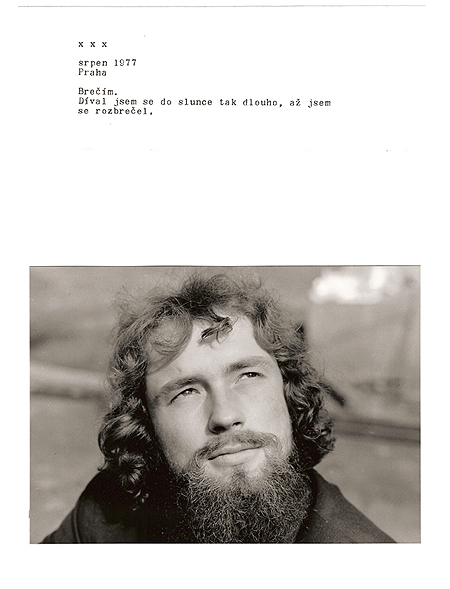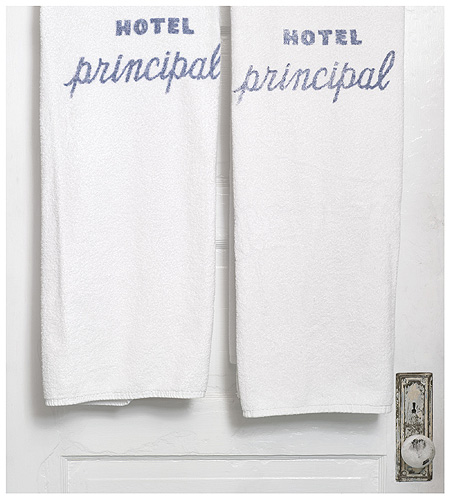“I gazed at the sun for so long that I’ve started to cry.”
Wednesday, September 17th, 2008
Czech Republic has a legacy and currency of conceptualism, and, for that matter, a socio-economic history in which working socially has its own political connotations. It is not surprising that the Czech artists with most international presence are conceptualists. Think of Jiří Kovanda’s scheduled actions and happenings; Kateřina Šedá’s social projects; Jiří Skála’s writing performances; Barbora Klímová’s current reenactments of almost invisible performances originally held in public spaces during the 1970s, when the country was communist and ruled as Czechoslovakia. From these artists, it is the new interpretations of Kovanda’s work that is important to touch upon here. This is not because there is a direct lineage between Kovanda and the younger artists that I mention thereafter. Clearly, the intentionality and form of their work couldn’t be more diametrically opposed.
Here are some of Kovanda’s happenings: September 3, 1977. On an escalator … turning around, I look into the eyes of the person standing behind me. In another action dated the same and described simply as Contact, the artist wanders on an almost empty sidewalk and, as if accidentally, bumps or rubs his shoulders when he encounters a person walking in opposite direction. Some months earlier, this time in a park in downtown Prague, May 19, 1977, I rake together some rubbish (dust, cigarette stubs, etc.) with my hands and when I’ve got a pile, I scatter it all again. Schölhammer sees a purposeful and meaningful aspect of anti-socialization in Kovanda’s work. He proposes the artist’s “refusal to cooperate” as a political act.
Simple actions characterize Kovanda’s work, while a level of production and art historical or institutional frame is either used or required, to a lesser or higher degree, in the work of these younger artists. The distinction is telling of the times. The new readings of Kovanda’s work describe the contexts of art production and reception of Czech contemporary art, particularly for performance. They suggest the possible subjectivities at play in work done today from that of the recent past. The curator Georg Schölhammer argues that, “Kovanda tries to find gestures in his work to act against the manifest ossification of society in the late 1970s, to transcend it and to find traces of an expression of individuality.” According to the curator, the bourgeois public of Fordism in the West and the bureaucratic Socialism in the East are the societies in question.
* * *
Under the direction of Vit Havernek, the Prague-based nonprofit arts organization Tranzit has taken the task of publishing a series of books about these and other Czech conceptual artists, young and old. This editorial project is done in collaboration with JRP | Ringier in Switzerland. These artist’s books and catalogues are published in Czech and English, and are strategically distributed, allowing new points of contact and reception of these artists work internationally. The reference to Georg Schölhammer is drawn from one of these books: Jiří Kovanda (Prague: Tranzit and JRP Ringier, 2006).
Jiří Kovanda is represented by GB Agency in Paris, who kindly provided the image pictured above. One of the best exhibitions at that the gallery has been an unconventional retrospective of his work curated by Work Method. Work Method is a Paris-based curatorial agency run by François Piron and Guillaume Désanges to initiate and manage independently individual and collaborative projects, including art exhibitions, performances, programs and editorial projects linked with contemporary art.
Image above: Jiří Kovanda. “XXX. August 1977. Prague. I’m crying. I gazed at the sun for so long that I’ve started to cry. (Je suis en train de pleuré. J’ai fixé le soleil depuis si longtemps que j’ai commencé à pleurer.)” Courtesy GB Agency, Paris.

